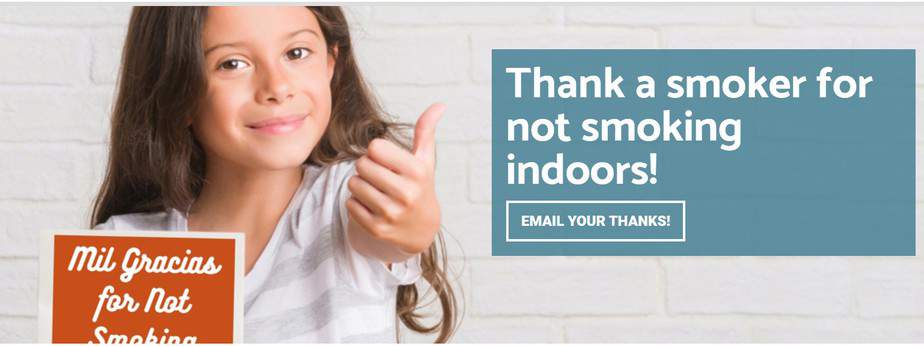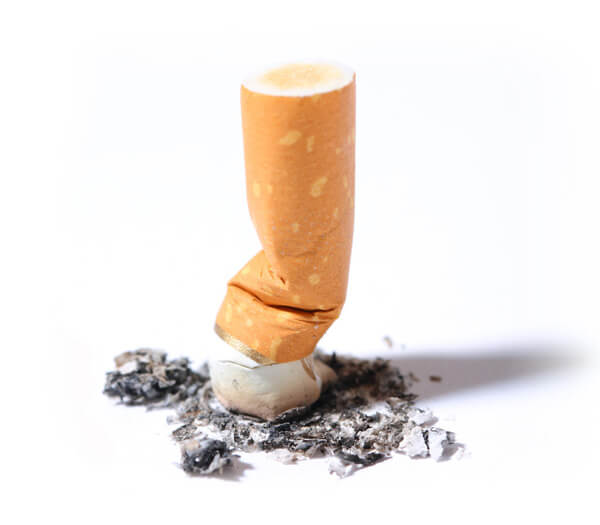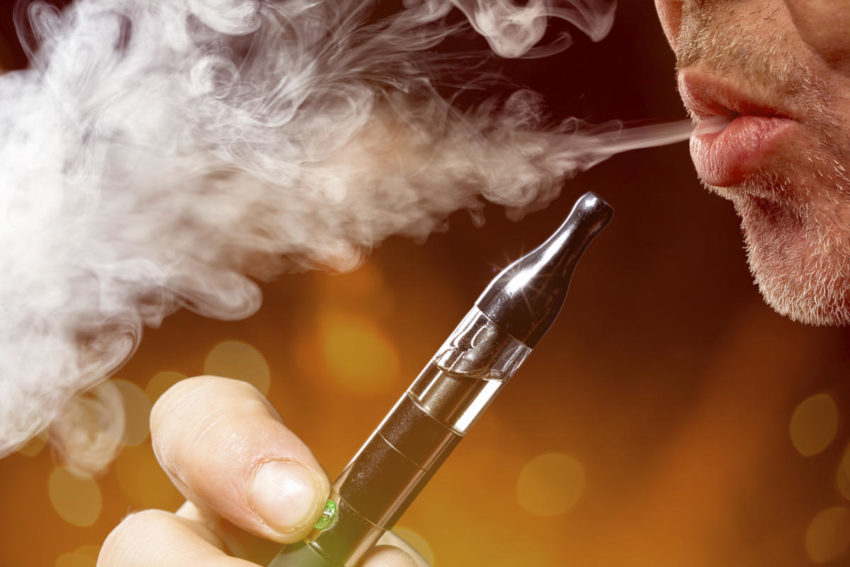‘Lungs can only take so much,’ environmental medicine physician says.
Mary Lucas lives on San Antonio’s Northeast Side with her 8-year-old son, Mychael Gordon. Both have asthma, requiring them to have ready access to an inhaler and nebulizer. Making matters worse, the neighbors in their apartment complex smoke.
“We have it coming in from all sides,” Mary said. “If somebody starts smoking in one of the other apartments behind us, it comes through our vents. We don’t smoke, but if you walk into our bathroom, it smells like smoke. Our closet smells like smoke.”
Mountain cedar pollen, dust, molds and other allergy triggers don’t help the situation. Last year, both Mary and Mychael were hospitalized with respiratory illnesses; Mary had community-acquired pneumonia.
A perfect storm
Their story is typical, and with COVID-19, flu, mountain cedar and smoking all in play in South and Central Texas this winter, the stakes are high for many people, said Claudia S. Miller, MD, MS, a professor emeritus and environmental health expert at The University of Texas Health Science Center at San Antonio (UT Health San Antonio).
Dr. Miller is especially concerned about mountain cedar. “The male mountain cedar trees will be releasing clouds of pollen beginning around Christmas through February,” she said. “This notoriously potent pollen can trigger flulike symptoms including coughing, sneezing, itchy eyes and noses, causing people to remove their masks, spreading COVID-19 and flu viruses as never before.
“We face a triple threat: Infection by two respiratory viruses, inflammation by tobacco smoke, plus a major allergen,” Dr. Miller said. “Lungs, and their owners, can only take so much.”
Together, these three airborne agents can act synergistically, she said. Being prepared with antihistamines can help some people with allergies, but smoke exposure and viruses remain a threat.
Taken hostage by smoke
“People feel smoking is a personal choice,” Dr. Miller said. “They don’t realize that many non-smokers are exposed every day to tobacco smoke in their homes. If you live with a smoker who won’t smoke outside, or if you live in an apartment or condominium where smoking is allowed, you have no choice.”
UT Health San Antonio pediatrician Mandie Svatek, MD, has visited homes of children who have asthma. The visits are part of the program SA Kids Breathe, which provides educational materials about asthma triggers and reducing children’s risk.
“During one visit a neighbor was smoking outside, and the family didn’t have adequate air conditioning,” Dr. Svatek said. “The door was open, which was allowing the secondhand smoke to enter the environment. That can be a component of an asthma exacerbation.”
Gratitude for safe behavior
Dr. Miller, Dr. Svatek, and colleagues at UT Health San Antonio and other organizations have launched an educational effort called Mil Gracias (A Thousand Thanks). The goal is to express gratitude toward smokers who guard the health of others by not smoking indoors, and, when outside, graciously distance themselves from others.

“Smoking, vaping and secondhand smoke almost certainly increase the risk of serious illness and death from viruses like COVID-19 and influenza, both currently circulating in our community,” Dr. Miller said. “COPD and asthma are among the major “underlying conditions” for COVID-19, and secondhand smoke often underlies them.”
Smokers need to protect others and themselves, Dr. Miller and Dr. Svatek agreed.
“COVID-19 has changed the playing field. Whereas in the past, smokers could die of lung cancer or emphysema 20 or 30 years later, now with COVID, they could require hospitalization, be intubated and die within weeks,” Dr. Miller said.
Reasons – and help – to quit
Dr. Svatek said geo-mapping studies confirm what is being seen in practices: Latinx children are being disproportionately affected by COVID-19. “In San Antonio, from 10% to 30% of this population of children who are being admitted to the hospital have some sort of underlying condition, which includes asthma,” she said.
 Smokers need resources – patches, gum, encouragement – to quit. The need to quit has become more urgent during the COVID-19 pandemic, when wearing a face mask is one of the crucial steps a person can take to stop the spread of the coronavirus.
Smokers need resources – patches, gum, encouragement – to quit. The need to quit has become more urgent during the COVID-19 pandemic, when wearing a face mask is one of the crucial steps a person can take to stop the spread of the coronavirus.
“You can’t smoke through a mask,” said Amelie G. Ramirez, DrPH, director of the Institute for Health Promotion Research at UT Health San Antonio.
To help smokers, the Institute offers Quitxt, a free bilingual text-message or Facebook Messenger service that turns a smoker’s smartphone into a personal coach to help him or her quit smoking. Quitxt sends interactive and entertaining messages for four months with links to online support, as well as music and videos developed by UT Health San Antonio researchers.
Messages focus on motivation to quit, setting a quit date, finding things to do instead of smoking, handling stress, coping and more. “We urge smokers to take a positive step for themselves, for their health and the health of those around them,” Dr. Ramirez said. “Join Quitxt.”
Instructions are online:
Join in English: Text “iquit” to 844-332-2058; or search QuitxtCommunity on Facebook Messenger and hit “Get Started.”
Join in Spanish: Text “lodejo” to 844-332-2058; or search QuitxtComunidad on Facebook Messenger and hit “Empezar.”
In October 2018, San Antonio became the first city in Texas to raise the legal age for purchasing tobacco products to 21. “We’ve done a lot to eliminate smoking in workplaces and bars, but the biggest challenge remains within people’s own homes, where children with asthma, pregnant women, immunocompromised individuals, and vulnerable elders live.” Dr. Miller said. “And of course, with the pandemic, many are spending 24 hours a day, seven days a week in their homes.”
The intrusion of smoke
Tobacco smoke is pervasive, a fact experienced by Mary Lucas and her son, Mychael. Although they don’t smoke in their apartment, they are subjected to secondhand smoke.
“Smoke travels like water travels in a flood,” said Dr. Miller, who has studied environmental triggers of illness for decades in Laredo and San Antonio and taught many public health professionals. “It travels through openings between walls, underneath the molding, through elevators. It flows just like water does.”
“If people live in a building that allows smoking, they will be exposed to it to greater or lesser degrees,” she continued. “This is a concern in all multifamily buildings.”
The intent of Mil Gracias is to thank smokers for doing all that they can to prevent the damaging health effects of the habit, for themselves and others. For people like Mary and Mychael.
# # #
The Long School of Medicine at The University of Texas Health Science Center at San Antonio is named for Texas philanthropists Joe R. and Teresa Lozano Long. The school is the largest educator of physicians in South Texas, many of whom remain in San Antonio and the region to practice medicine. The school teaches more than 900 students and trains 800 residents each year. As a beacon of multicultural sensitivity, the school annually exceeds the national medical school average of Hispanic students enrolled. The school’s clinical practice is the largest multidisciplinary medical group in South Texas with 850 physicians in more than 100 specialties. The school has a highly productive research enterprise where world leaders in Alzheimer’s disease, diabetes, cancer, aging, heart disease, kidney disease and many other fields are translating molecular discoveries into new therapies. The Long School of Medicine is home to a National Cancer Institute-designated cancer center known for prolific clinical trials and drug development programs, as well as a world-renowned center for aging and related diseases.
The University of Texas Health Science Center at San Antonio, also referred to as UT Health San Antonio, is one of the country’s leading health sciences universities and is designated as a Hispanic-Serving Institution by the U.S. Department of Education. With missions of teaching, research, patient care and community engagement, its schools of medicine, nursing, dentistry, health professions and graduate biomedical sciences have graduated more than 37,000 alumni who are leading change, advancing their fields, and renewing hope for patients and their families throughout South Texas and the world. To learn about the many ways “We make lives better®,” visit www.uthscsa.edu.
Stay connected with The University of Texas Health Science Center at San Antonio on Facebook, Twitter, LinkedIn, Instagram and YouTube.
To see how we are battling COVID-19, read inspiring stories on Impact.


